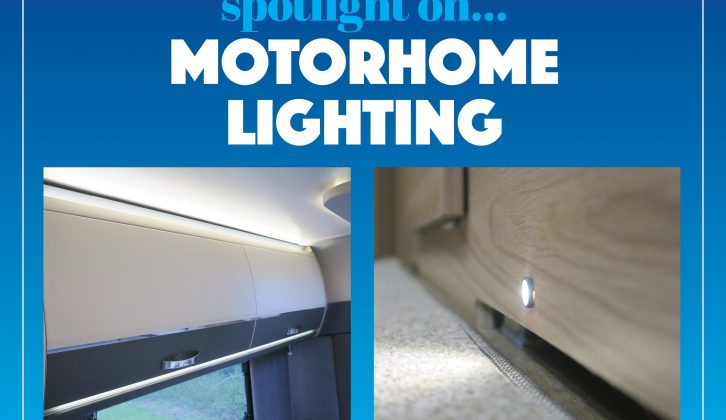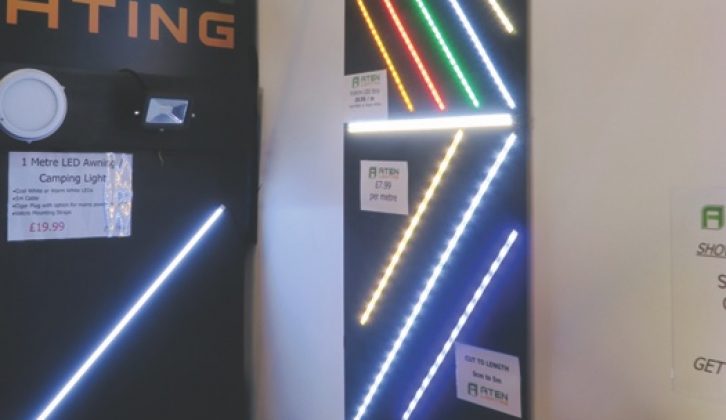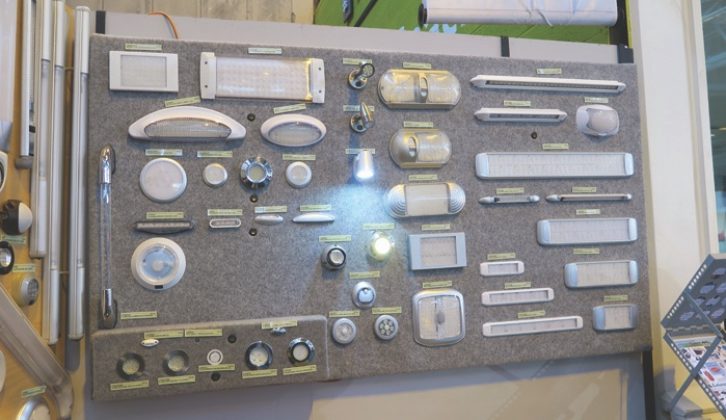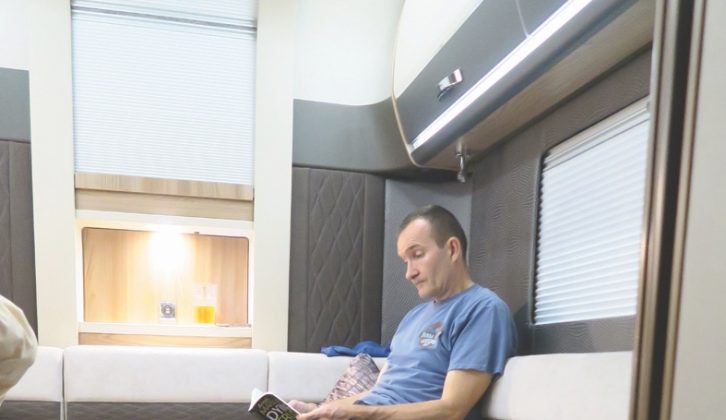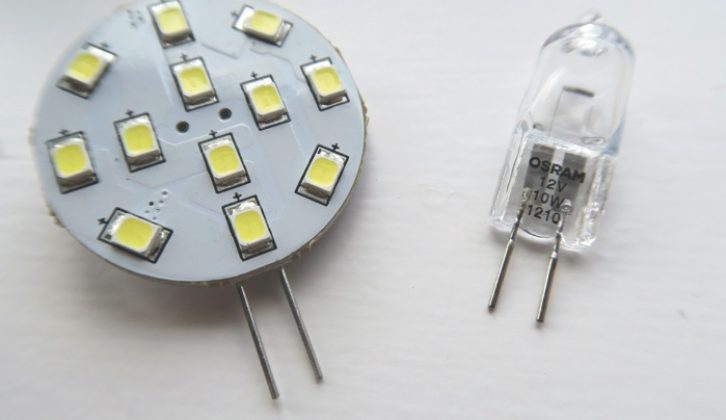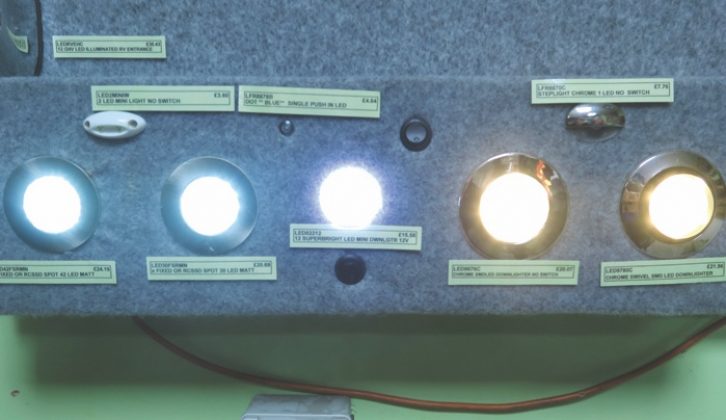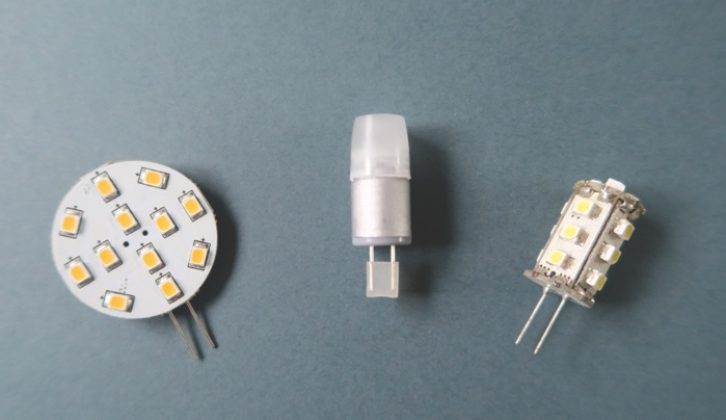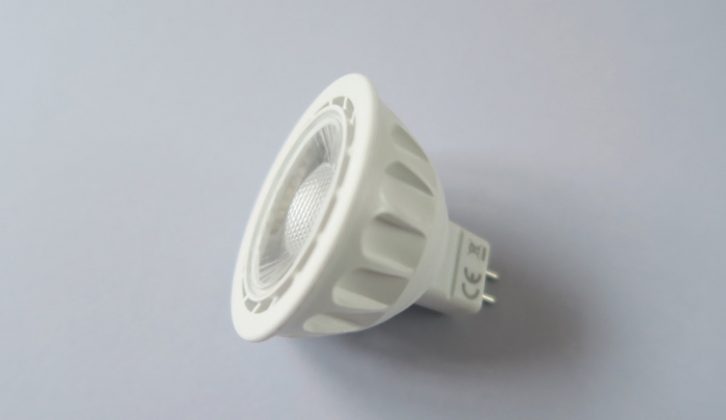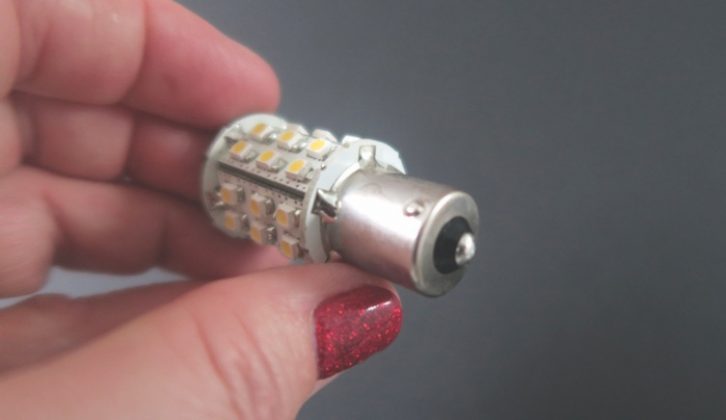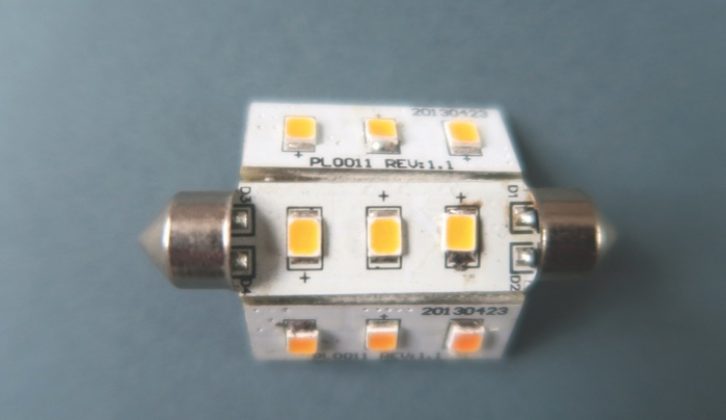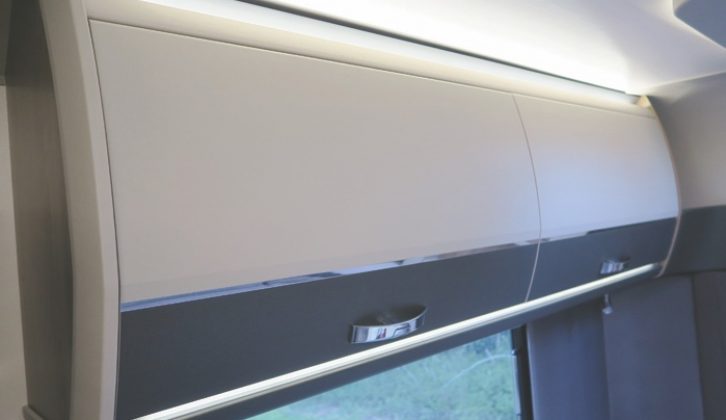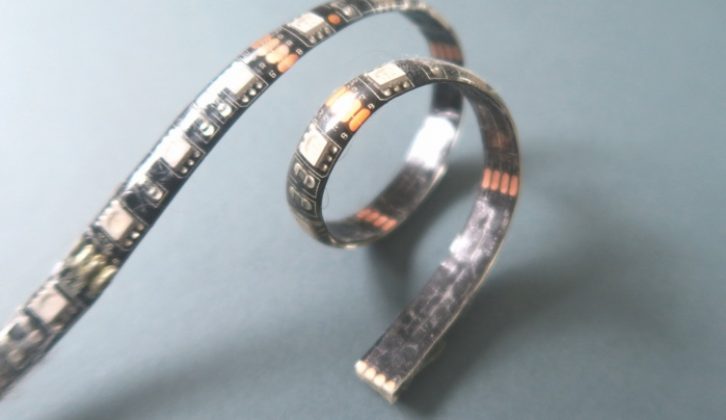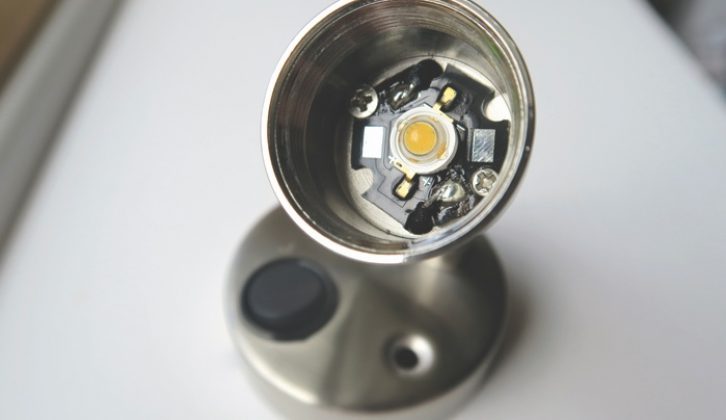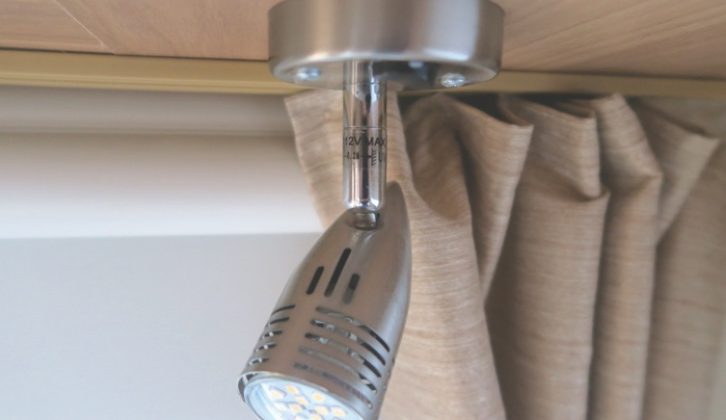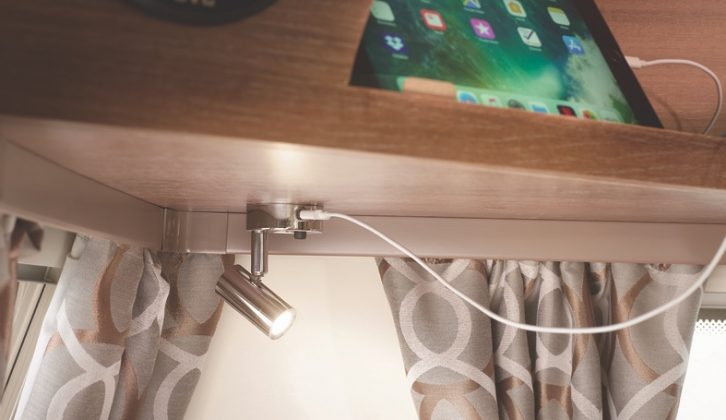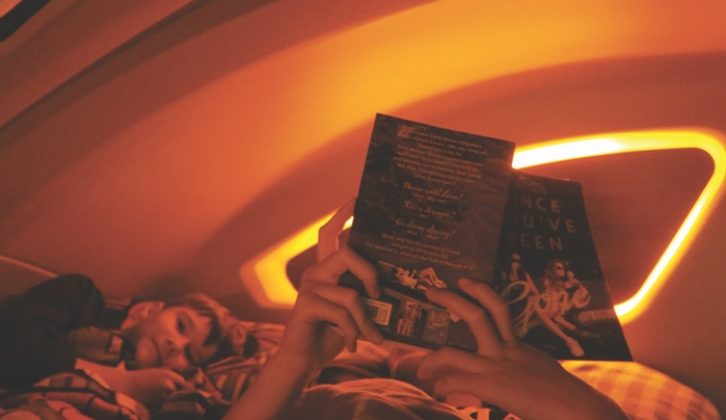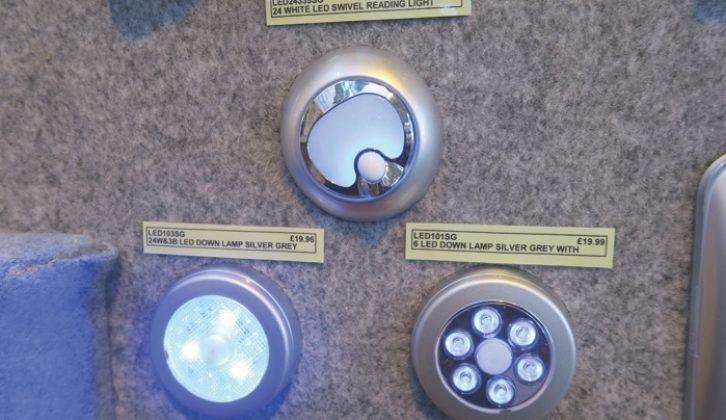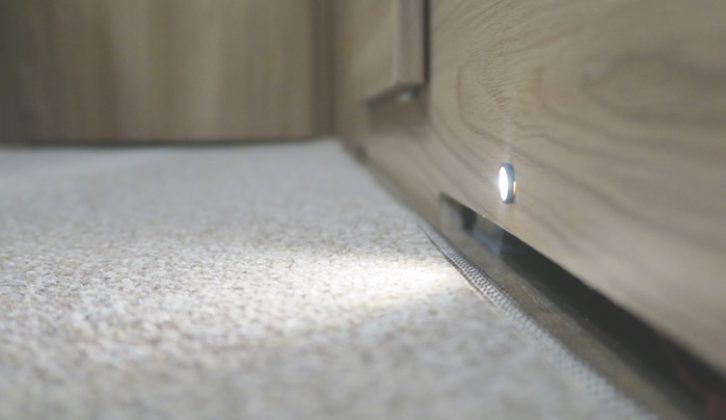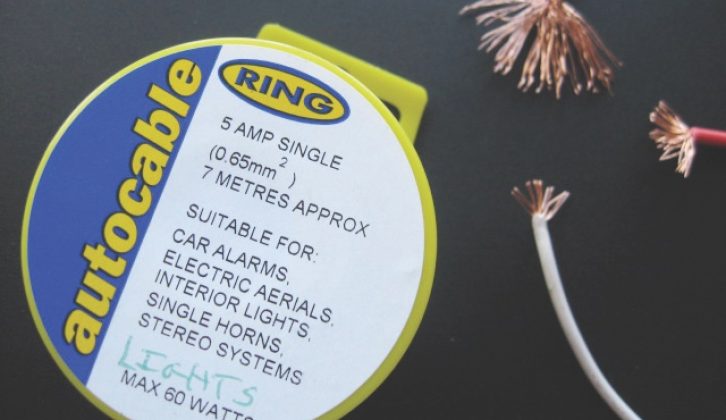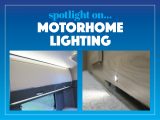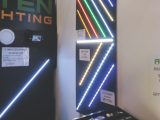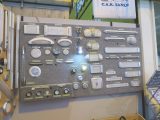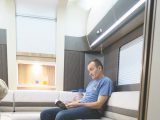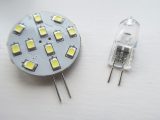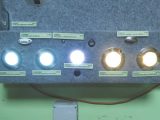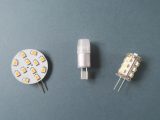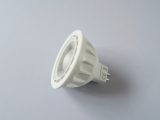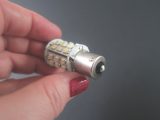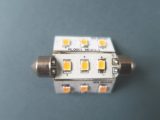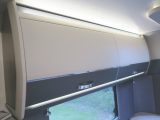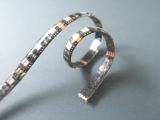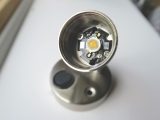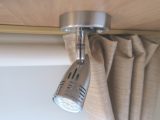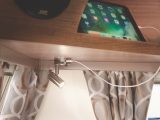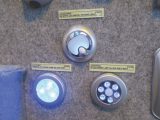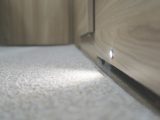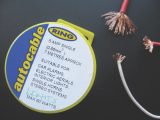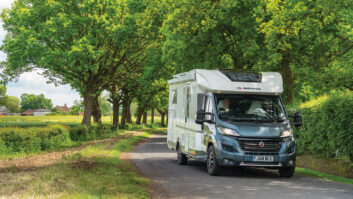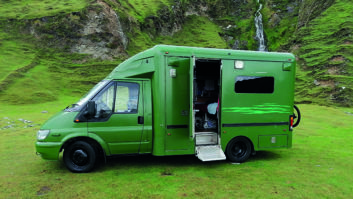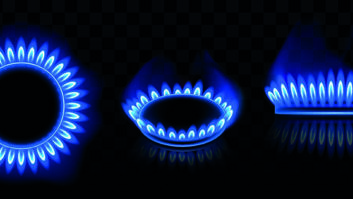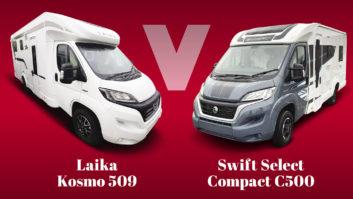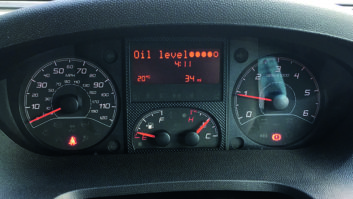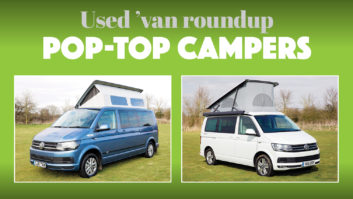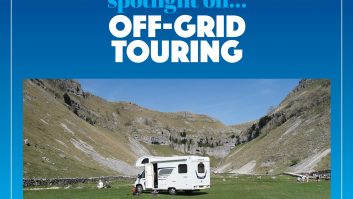Have you ever visited one of the national shows and been wowed by the array of LED lights now on the market? I find myself – rather like a moth – drawn to them!
Companies such as CAK Tanks make it a lot easier for customers to get more of a feel for LEDs, by having a display board of products that can assist potential buyers in choosing colour, style and function.
In some of the older motorhomes, the lighting can seem rather dim, and some still use halogen light bulbs. By contrast, many modern ‘vans are lit up like the Starship Enterprise!
Improving the lighting in your ‘van is not difficult and sometimes, it can be as simple as changing a light bulb.
Halogen or LED?
Halogen bulbs are light and low-cost, and offer instant brightness, but they can get extremely hot (enough to cause burns) and are capable of exploding.
In addition, the bulb is sensitive to the oils in your skin; touch it with your bare hands and it could rupture.
In contrast, the light-emitting diode or LED has a long life (up to 100,000 hours), does not produce heat, is very robust and is cost-effective in the long run, because you don’t have to change them so often.
They switch on rapidly, even when cold, and are environmentally friendly because they contain no mercury; some are lead-free. Most importantly, they consume much less power – useful if you are camping off-grid.
Warm or cool?
Traditional LEDs have a ‘cool’ blue/white hue, which doesn’t appeal to some customers. Now, manufacturers have developed a ‘warmer’ white/orange LED. These tend to make a ‘van seem more homely and cosy – albeit with a slight loss of light intensity.
Neither one is ‘right’, this is simply a personal preference, partly depending on use. If you like the yellowish colour of a conventional lamp, warm white would be the ideal choice. If you prefer a modern, clean look, the cool white colour might be more to your taste.
LED lights
There are many categories of LED, so I will keep this simple and focus on the main ones on the market. First, the most common are G4 LEDs, which come in two types – discs or towers.
Discs can have either a side-pin or a back-pin option, and provide light in one direction. Towers provide light in all directions and are ideal for wall lights and lamps.
The MR11 and MR16 are similar to those found in our homes. They are often fitted in spotlights and reading lights. These tend to come in a conical casing, with two short pins at the back.
Check the diameter of the old bulb to identify the right size when you replace it, because the MR16 is larger in diameter than the MR11.
The bayonet LED is often used in awning lights, spotlights and reading lights. Before replacing this, check the diameter of the end cap and count the number of metal ‘spots’ located on the base. You can also get screw caps.
Festoon LEDs are found in marker lights, cabin lights and rooflights. They come in two lengths, 37mm or 42mm, housing three to nine LEDs.
Flexible LED strip lighting is highly versatile, for downlighters underneath cupboards or uplighters on lockers or bedheads. It can be cut to size and has a self-adhesive backing. Look out for waterproof strips, which are excellent for awning lights.
If you are unsure which bulb to buy, use the old one to identify the shape and size for your light fitting, or seek advice from specialists, such as Aten Lighting or CAK Tanks.
It is important to note that some older motorhomes might have 230V mains lights, so be sure to check you are replacing the correct voltage bulb.
Light fittings
Some spotlights have an integrated LED that cannot be removed and with only one LED, emits poor lighting. By replacing the spotlight, not only do you improve the style, you also improve the light’s brightness.
There are some excellent spotlights on the market and some are fitted as standard in certain motorhomes. Look for dimmable spots and directional spotlights with a USB socket.
Nightlights
My children have never been fans of sleeping in the dark, so nightlights were the solution. The bicolour LED strip lighting by the overcab bed in the Swift Kon-tiki 649 was a winner!
Look out for multifunctional lights made up of three blue LEDs, which at the push of a button can become a reading light of 24 white LEDs.
There is a wide range on the market to choose from, so it is well worth shopping around for the one that best suits your family’s needs.
Many manufacturers are now fitting low-level nightlights and these can again be found in the Swift Kon-tiki 649. They won’t distract you from sleeping, but are useful if you need to get up during the night.
If you are thinking about adding extra lighting, particularly in areas where light levels are not great, this might necessitate running additional cables, which need to be installed by a competent person. Only thin-gauge flexible automotive cable is needed to run 12V LED products.
Final thoughts
Although there isn’t the space here to cover every bulb on the market, I hope this gives you an idea about what to look for. There are so many different styles, colours and levels of brightness to choose from – visit the shows to see what’s out there.
Interested in renovating your motorhome’s interior? You might also like to take a look at our guide to fitting a solar panel and regulator, perfect for those that like to go off-grid. There’s also advice on looking after your curtains and blinds, fitting a grab handle, customising your crockery storage and more in our advice section.
If you’ve enjoyed reading this article, why not get the latest news, reviews and features delivered direct to your door or inbox every month. Take advantage of our brilliant Practical Motorhome magazine SUBSCRIBERS’ OFFER and SIGN UP TO OUR NEWSLETTER for regular weekly updates on all things motorhome related.
LEDs consume much less power - useful if you are camping off-grid
